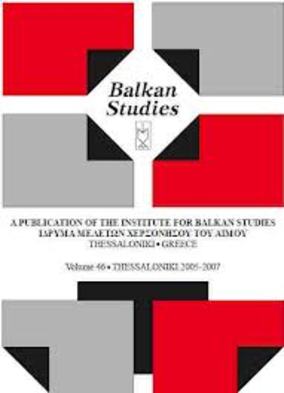Perception of the “Neighbour” in periods of Crisis : The beginning and the end of the twentieth century in Bulgaria and in Greece
Part of : Balkan studies : biannual publication of the Institute for Balkan Studies ; Vol.42, No.1-2, 2001, pages 109-114
Issue:
Pages:
109-114
Section Title:
Articles
Author:
Abstract:
The report compares the characteristics of Bulgarians and Serbs in thebeginning and at the end of the 20th century in Greek sources. An attempt ismade to compare elements of these national images with their analogues ofSerbs and Greeks in the Bulgarian literature. This comparison in chronologicaland geographical terms brings out two interesting trends: attitudes andstands from 70-100 years ago, related to the strong tension among the Balkancountries around the period of the wars (1912-1922), appear in scientific(popular science) publications of 1999-2000 addressed to a relatively broadreading public. It is also interesting that in the last 5-6 years in Bulgaria andGreece efforts are made (successful at that) to “clean” the school literaturefrom any negative references to the neighbour and in this way overcome the negative stereotypes in the collective consciousness placing “the neighbour” inthe field of “the enemy”.The report has two accents, placed on the analysis of diverse sources fromthe early 20th century, and on newly published articles in the Bulgarian andGreek periodicals (2000). The latter are of interest because they elucidate,from the viewpoint of the present day and in its development, the issue of therelative invariability of the features of the “Balkan neighbour”, inspecting thisimage from a comparatively great chronological distance.Use was made of conclusions in studies of the image of “the other” (“theneighbour”) in Bulgaria and Greece based on various sources: scientific,scientific-propaganda and epistolary literature, travel notes, fiction, as well ashistory textbooks for 5th-8th grade in the two countries.
Subject:
Subject (LC):
Keywords:
Βουλγαρία-Ελλάδα τον 20ό αιώνα




